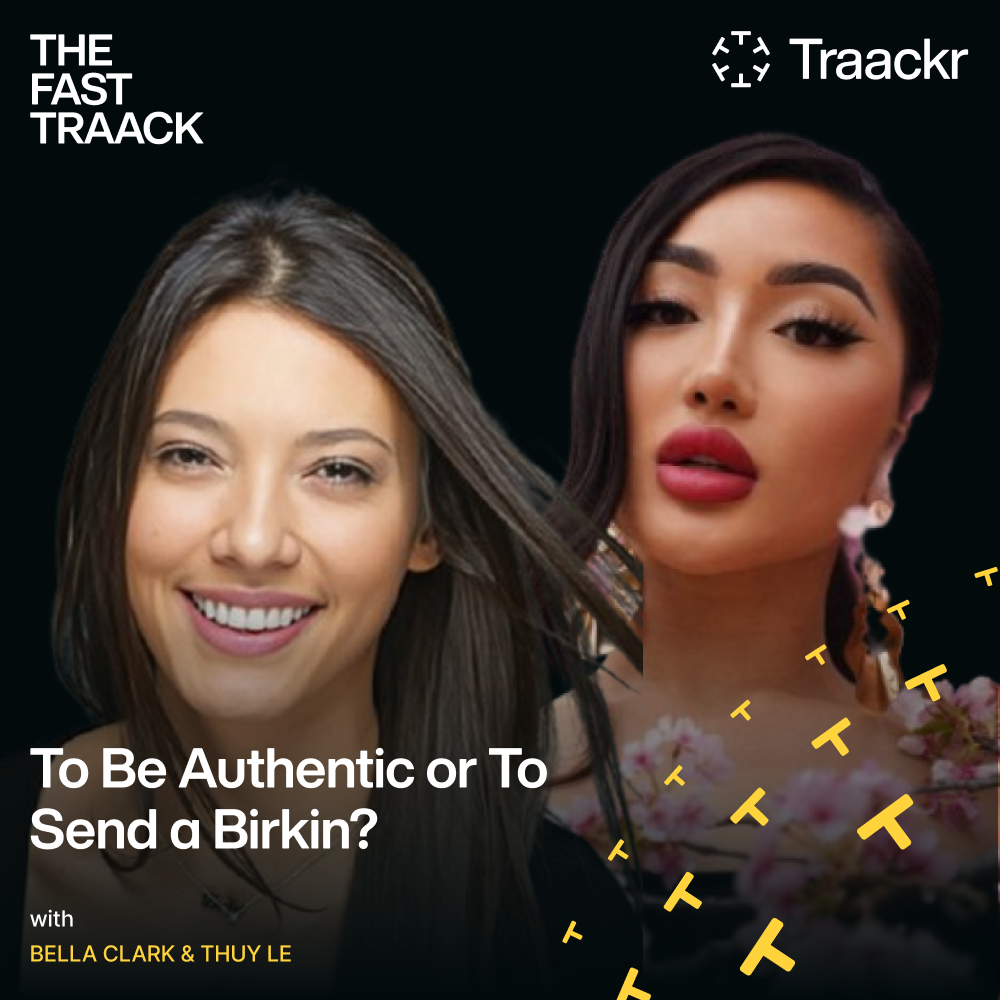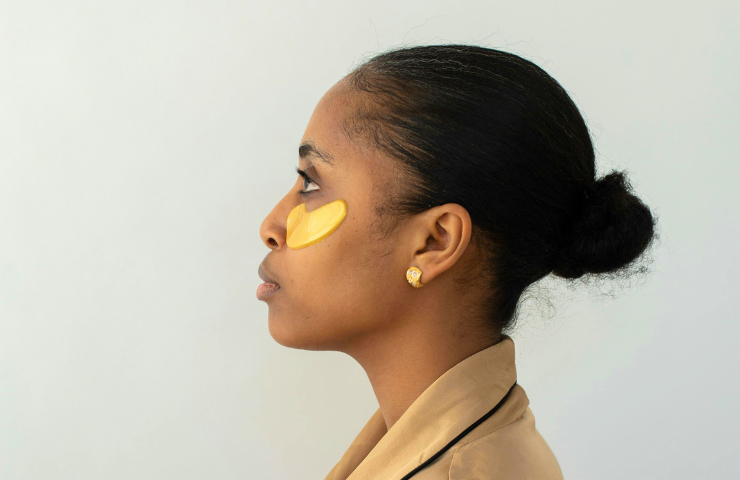Maybelline and Club Med on Influencer Management and Relationships

It’s a creator’s world and brands are just living in it. How can brands adapt and thrive with the new changes the influencer marketing industry is currently facing?
To answer this, we asked influencer marketing experts Sarah Shaker, Head of Brand Engagement for Maybelline New York, L'Oréal, and Tiphaine Neveu, Head of Influence, PR and Social at Club Med.
Below we share their 4 influencer management and relationship tips that have helped make their brands compelling to creators.
Would you rather see them talk instead of reading? Watch their influencer management tips live!
4 Influencer Management Tips from Maybelline and Club Med
1. Find influencers who will support your influencer marketing campaign objective
“Our influencer strategy is not a one-size fits all approach. The objective of the campaign and the creators we are working with dictate how we work with our partners.” - Sarah Shaker, Head of Brand Engagement for Maybelline New York, L'Oréal
Influencers can now help a consumer go from awareness to purchase in the blink of an eye. So, it’s critical to think through which influencers will be able to best support different stages of the funnel and then map that to the objective of your campaign.
For example, if you are promoting an awareness campaign, you may want to prioritize working with influencers that have more reach (vs higher engagement rates), like those in the macro-VIP tiers.
On the other hand, if you want to drive sales, you’ll likely want to focus on partnering with influencers who have high engagement on sponsored content and have experience with discount codes, affiliate links, or other social commerce techniques.
According to Tiphaine, Club Med’s primary influencer marketing goal is to acquire new customers. Her team focuses on partnering with influencers who can create content that makes their audience go from scrolling to purchasing (aka full funnel).
In order to find influencers who can accomplish these goals, make sure to look for influencers that fit your
- Audience demographics: Is the influencer’s audience in the right age range, country, and income level?
- Audience type: Does the number of followers represent their actual audience and not mass or suspicious followers?
- Brand affinity: Has the influencer and their audience shown affinity to similar brands?
“If we do not target the right audience, we end up creating frustration amongst the influencer’s audience and creating a partnership that is not mutually beneficial.” - Tiphaine Neveu, Head of Influence, PR and Social at Club Med
Pro tip: Take your influencer marketing program to the next level by finding influencers who are doing something new! Smaller influencers are often at the heart of new trends because they’re willing to take risks and see what sticks. To find these experimental influencers, evaluate past content performance by engagement rate.
2. Create a tailored influencer onboarding experience
As full-time content creators, professional community builders, and savvy marketers, influencers are crunched for time! A great way to make your brand stand out is by offering them a well-curated and professional experience.
It starts with creating a clear, concise brief that sets the influencer up for success. If you want to stand out to an influencer, create an “influencer toolkit”, or, a highly branded, beautifully designed, information-packed pdf to help influencers visualize what they could create. Check out how Bite Toothpaste Bits improved its influencer management by doing just that.
Remember: It’s not about dictating the details of the content, but rather providing them with a general direction and idea of what you want to accomplish in the campaign. It’s important to give them the creative freedom to put their own unique spin on your vision.
That being said, it is okay to include specific requirements that are important to your brand. For example, Club Med requires all creators who work with the brand to pass the ARPP (French Advertising Advisory Board) certificate. As long as you communicate these requirements (and why you have them) clearly and consistently, it shouldn’t be a sticking point for your partners.
Great influencer management and onboarding is also about being organized. Build a structure for how you reach out to influencers, handle the negotiation process, and pay/reward partners. The better you are at communicating these processes to your own team, the more efficient you’ll be at creating a good experience for everyone.
Pro Tip: If you are conducting an influencer seeding campaign, a great way to create a tailored experience for your influencers is to have an opt-in system that allows them to pick out the products they are most interested in. Not only does this give influencers a more customized experience it also lessens the amount of product waste! There are influencer marketing platforms that offer branded onboarding experiences, like Traackr’s Brand Studios.
3. Build programs that nurture influencer relationships
There’s this concept in influencer marketing called “always-on” programs. These are long-term partnerships that are built to grow and strengthen brand affinity. These tend to lead to more impactful campaigns because an influencer’s audience is seeing your brand appear in a creator’s content multiple times in interesting ways.
For example, Maybelline has an outstanding “always-on” partnership called the Babellines (we LOVE this name!). It has two main objectives.
- The first objective is to get a steady stream of creator content based on the brand’s priorities for that month. Whether that’s a product launch or a cause-marketing initiative, the brand has an army of dedicated influencer partners who are ready to share with their audience.
- The second objective is for the creators to pitch to the brand! Creators have the space to share what’s trending and which trends they want to jump on with Maybelline. This in turn keeps the beauty brand relevant and never in the dark about where the brand fits within the market.
“Our team works closely with creators, so the content stays authentic to what the creator wants to be speaking about and keeps our brand relevant in the super-fast-paced world of TikTok trends.” - Sarah Shaker, Head of Brand Engagement for Maybelline New York, L'Oréal
Another reason why we love this program is that it builds a true community with its creator partners. The two-way street of communication between the brand and the creator partner. This allows for the team to collect deep product insights and share them with the rest of the marketing or product development teams.
4. Focus on consistently connecting to your influencer partners
Influencer marketing is no longer a one-and-done marketing strategy. It now requires brands to have consistent influencer connections that build community.
Here are a couple of ways to achieve this:
- Create memorable experiences. Extravagant trips are no longer necessary, but the “perk,” or exclusive opportunity for the influencer, is. Prioritize keeping the experience memorable. One way to do this is to create 1v1 time with the brand or industry experts. For example, Maybelline likes to provide its influencers time with their certified makeup artists.
- Let creators speak authentically about your brand story. You chose your influencer partners for a reason, so trust them when they speak about your brand through their lens. A creator highly values creative freedom and the opportunity to leave an imprint on your brand/product in a relationship (outside of compensation of course!).
- Build your internal influencer marketing team. Influencer management takes time and creating deep connections with your creator partners takes even more time. Bring on dedicated influencer marketers who can provide your creator partners the time they deserve.
“Community and authenticity are key for our influencer marketing strategy. When we evaluate the effectiveness of our program, we take a qualitative look at each partnership. Does what we’re asking make sense with the content the influencer already creates? What’s the sentiment of the influencer’s community — are they engaged or passive? We also strive to find partners that are actively managing and fostering the growth of their communities.” - Sarah Shaker, Head of Brand Engagement for Maybelline New York, L'Oréal
Pro Tip: Influencer management is also about seeing how influencers manage their communities. Check your influencer partner’s comments to see how their community is responding to the content. High engagement is great, but high engagement with folks talking about your brand in a positive manner is even better.

Listen to Bella Clark, Head of Influencer and Partnerships at Lipton, and content creator, Thuy Le, share why authenticity outshines extravagance when it comes to creator partnerships.
Listen nowSee which brands are leading the way in influencer marketing with our real-time performance leaderboard.
View brand leaderboard_Nick_Fancher_Photos_ID6169.jpg)
Unlocking Creator Value for Global Brands in the Age of AI

The UK’s New “Less Healthy” Food & Drink Ad Rules Just Changed Influencer Marketing

Rising and Top Influencers #Over40 in the Beauty Industry
Level up your creator marketing expertise
Get industry insights and updates straight to your inbox.
